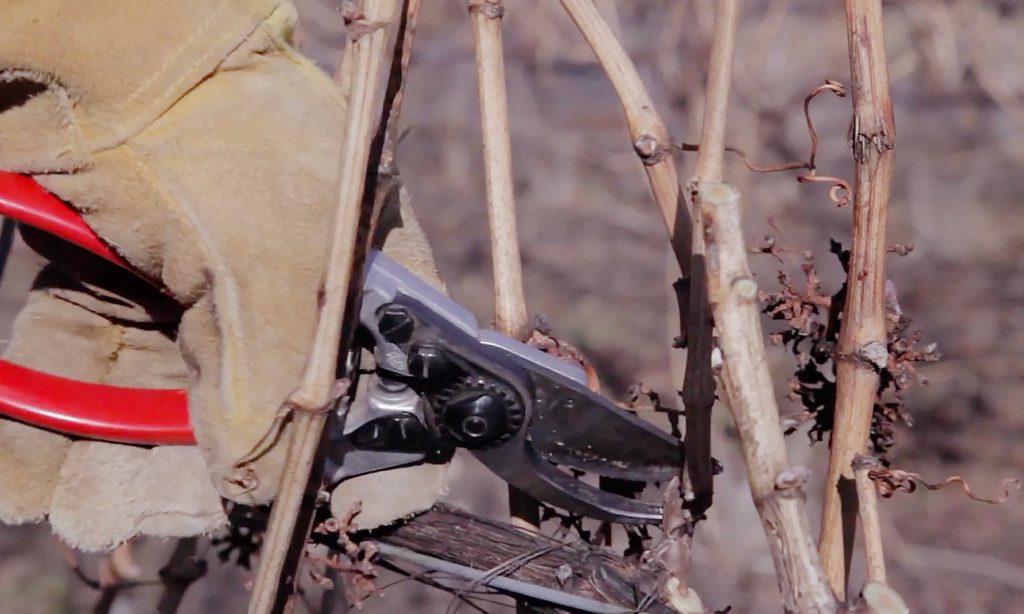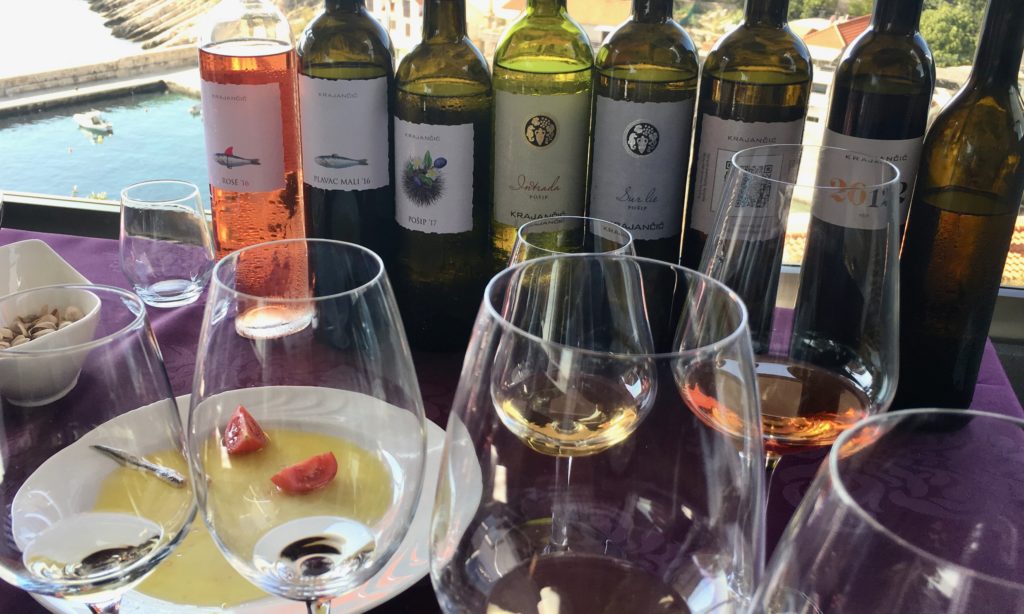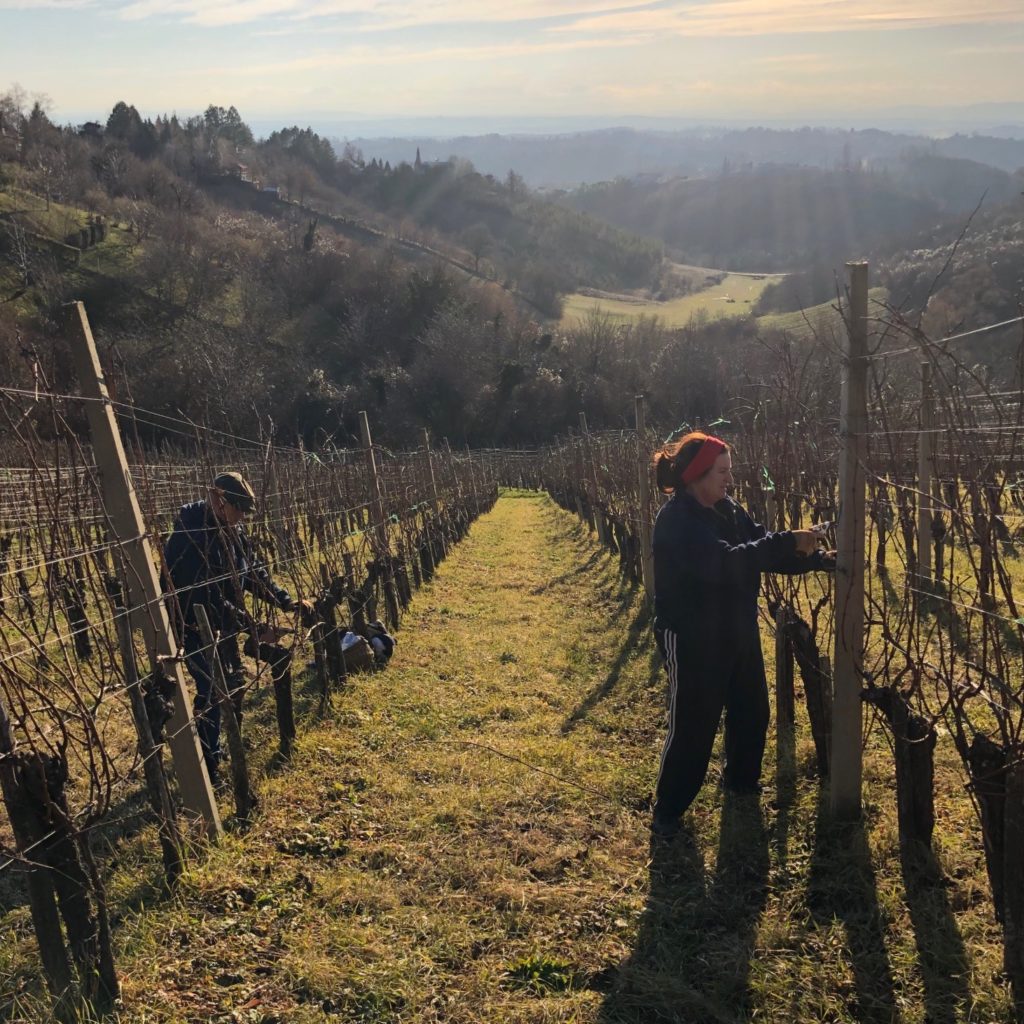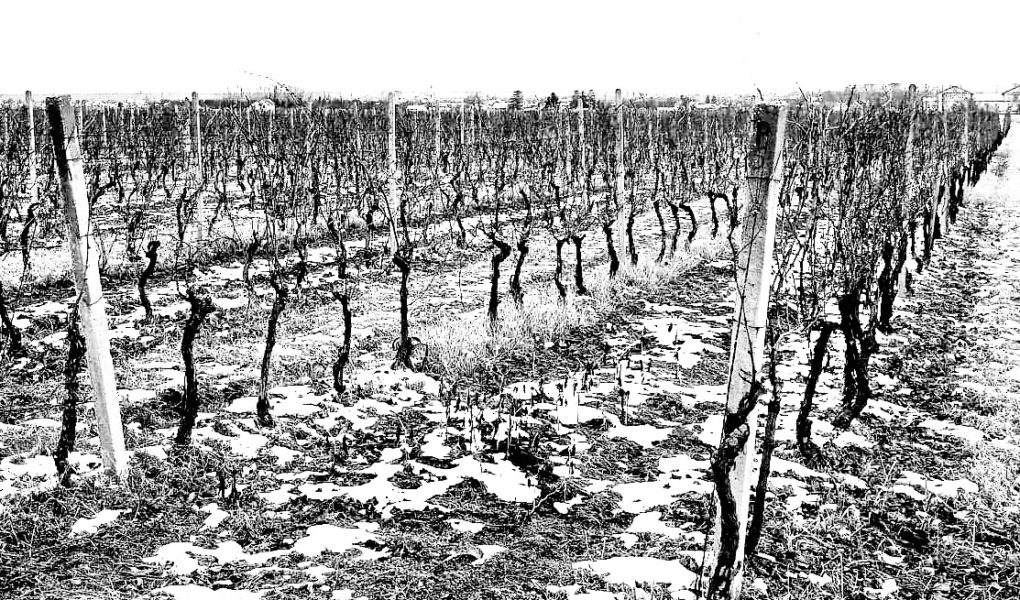This is the first in a new series of monthly articles that will follow eight wine makers through their year in all four of Croatia’s major wine regions. The grape harvest is both the beginning and the end of a year-round work cycle, a balance of supporting nature in the vineyard and transforming its fruit in the winery. By talking with two groups of wine makers in alternating months, we hope to experience the whole circle of wine production and learn what choices wine makers face each month, the differences between regions, and the fine balance between taking what nature gives and being able to control the outcome.
The first of the new year is a time when we all look both forward and back. January in the winery is likewise a time for reflection. Looking back, wines from the previous harvest are safely maturing in tanks and barrels, awaiting the moment when they are ready to be bottled and ultimately released for sale. Looking forward, the vineyard cycle will soon begin again, and the vines need to be prepared for their best performance. January is a time for meditative pruning, for making plans for the coming year before green growth begins, bringing months of steady hard work.
Winter pruning for spring growth
Pruning is the most important activity in January. The leaves dropped off the vines with the first frosts in late autumn, and the vines are dormant. Now the trunk and the slim canes of last year’s growth can be seen clearly. When the vines reawaken, they will devote their energy to producing new shoots, leaves and fruit. But they must be encouraged to produce the right amount of fruit—too many shoots result in lots of fruit of low quality. This is where pruning comes in. Removing most of last year’s growth and leaving only a certain number of buds for this year’s shoots to grow from allows the plant to devote the right amount of energy to fruit production.

There are different techniques for pruning, depending on the grape variety, the part of the world and the shape the grapevine will be trained to take as it grows. In Croatia, most vines are shaped to be attached to wires, standing in neat rows, but some growing in small or steep plots may be attached to individual stakes for stability or simply grow, seemingly freeform, near the ground. The form of the vines is part of a finely tuned negotiation with the sun, wind and moisture—the ability to allow the fruit ventilation and sunlight as it ripens, or keep fruit in the shade and humidity nearer to the ground, are affected by how the vines are pruned and trained.
Clai
Region: Western Istria
Certified organic
10 hectares of vineyards
6 vineyard sites
35,000-40,000 bottles/year
Grapes grown: Malvasia, Pinot Gris, Muscat Blanc, Sauvignon Blanc, Chardonnay; Refošk (Teran), Merlot, Plavina
It is cold weather for pruning in Istria. But like most wine makers, Dimitri Brečević at Clai welcomes the chill because “the cold [cleans out] the parasites and all the problems in the vineyards.” “It’s good to get frost in the morning,” he says, but western Istria rarely gets snow because the presence of the sea makes the weather slightly milder here. Clai’s team of three will get the pruning done in about one month, by mid-February if the weather cooperates.
Pruning also frees up the vineyard supports. “When you finish the pruning you have to fix all the structure of the vineyards, the wires, posts—you have to fix what was [damaged] because of the tractor, or because it is old.”
As winter progresses, vintners hope it will end at just the right time. “These past few years I think we’ve had much warmer winters. I’m not a specialist to say if it’s really true or it’s just a feeling. The biggest problem is not really now, it’s at the end of winter when it’s a little warm and the vines are coming out and it makes a much longer period of vegetation.” Last year the vegetation began at least 20 days before normal. Intensive work begins with the start of vine growth, so early vegetation means a longer work season overall. There is also the danger that a late frost will come along and damage the tender shoots that have emerged.
“Winter for us is always a period when we can calm down a little and think about plans, especially this year because we don’t have any tastings and events. For the winemaker, winter is the best time to think—also pruning is work where you can think about many things while you’re doing it.”
Krajančić
Region: Korčula / Dalmatia
4 hectares of vineyards + 1.5 under contract
9 vineyard sites
50,000 bottles/year
Grapes grown: Pošip; Plavac Mali
In Dalmatia it has been raining for weeks. Enologist Ivana Krajančić says their team will wait until the vineyards are less muddy, especially those in the Čara valley, before they start pruning. Then it will take 10 people about two weeks to prune all the vineyards, working from 7 to 3 everyday. They will also fertilize the vineyards with organic fertilizer, which they do every three years.
It almost never snows on Korčula, but the vines still get their winter rest due to the chilling effects of the bura, the north wind that sweeps down the Dalmatian coast.
January is also quiet in the cellar. Krajančić is watching the progress of wines from the 2020 harvest with extra interest. The Pošip from this harvest is being made for the first time with 100% native yeasts, part of research into Pošip yeasts that Krajančić has been working on for the past six years.

Yeasts are all around us in nature, and certain types are native to certain vineyard locations and even specific grape varieties. When grapes are harvested, there are always wild yeasts on the skins. It is possible to ferment the wine using only these wild yeasts (instead of adding yeasts cultured in a lab). The benefit of this is the possibility of expressing more of the terroir of the vineyard or the specific aromas of the grape variety in the wine. One drawback can be that the wild yeasts may not have the strength to complete the full fermentation on their own. This is why many winemakers add commercial yeast—it gets the job done.
Krajančić explains, “Every year we would use a little more autochthonous [native] yeast and a little less commercial yeast. This year we decided to use completely autochthonous because we think that Pošip yeasts are very aromatic, full of esters, so we can bring that smell of summer, lots of flowers, lots of fruits [to the wine].”
Wines from harvests before 2020 are still resting in barrels on the lees, the dead yeast cells left from fermentation, which will give the wines a complex, yogurty tang in addition to the fruit flavors from the grapes. This process is called sur lie on the wine label.
“Every couple of weeks we have to see if the lees are okay,” Krajančić explains. If the lees are not smelling as they should, there may be a problem with vitamin or oxygen levels in the wine. Once these wines are separated from the lees, they will be more stable.
Korak
Region: Plešivica / Croatian Uplands
6 hectares of vineyards + 2 under contract
7 vineyard sites
50,000 bottles/year
Grapes grown: Riesling, Sauvignon Blanc, Chardonnay, Pinot Gris; Pinot Noir, Syrah, Portugieser
The Croatian Uplands, in a ring around Zagreb, are the coldest winegrowing region. Wine maker Josip Korak says they need to start pruning but it has been snowing recently, so they will wait to see if the weather improves. Still, he says, “We like when it’s a cold winter because the diseases will die in the vineyard. [And] it’s better to have snow to have more water in the soil. We haven’t had a lot of snow the last ten years; the weather is changing. Winter is coming later and later but there’s not much snow.” He and his father and mother will do the pruning. “A lot of the jobs in the vineyard we do alone because we’re a small boutique winery.”

It is mostly quiet in the cellar here, too. The 2020 wine has been racked (separated from the yeast and sediments left from fermentation). Wine that is in barrels needs to be topped up regularly by adding more of the same wine to fill the barrel. In barrels, the wine slowly evaporates, leaving a “head space” where oxygen could allow spoilage to begin. Like all wine makers, Korak regularly tastes the wine to monitor “how it’s growing, how it’s aging—to see how it’s different.”
His next job in the winery, in February, will be to bottle the base for his sparkling wine and begin the second fermentation which will create the bubbles in each bottle. The bottles will ferment and then age for at least three years before they are ready to be finished and sold.
Normally Korak would look at bottling his first 2020 wine, the Sauvignon Blanc, in April, but he says that because of delayed sales due to Covid they might not need to bottle right away. They may choose to leave the wine maturing on its fine lees, which will give it an extra depth of flavor when it is eventually bottled.
The Coronavirus pandemic has also given Korak the opportunity to fast-track the long-term project of converting to organic winegrowing. The 2020 harvest was the first for which all of Korak’s vineyards were farmed organically. After two or three more years they will be able to be certified organic. Looking on the bright side, he says, “Now we have more time for our vineyards and for organic production.”
Antunović
Region: Erdut / Danube
7.6 hectares of vineyard + contract
2 vineyard sites
50,000 bottles/year
Grapes grown: Graševina, Chardonnay, Silvaner, Muscat Ottonel, Chasselas; Pinot Noir, Cabernet Franc, Cabernet Sauvignon
The Danube region is defined by the river Danube, which snakes its way along the far eastern edge of Croatia, in places forming the border with Serbia. In Erdut, the river bounds a peninsula of land on three sides, providing humidity and a touch of warmth and reflected light to that spit of fields and vineyards.
“Our soil is completely different because of the Danube,” says Branimir Turk of Antunović winery, “We have that alluvial and mineral soil.” The minerals deep in the soil make themselves known in the wines of this region.

Right now there is snow on the ground, and the Antunović vineyards await pruning. There is plenty of time this month for making plans. In the coming year or two, the mother-and-son winemaking team may relocate the majority of their vines to the higher of their two vineyard plots, where the soil and sunlight are more favorable. And Antunović, too, has been slowly transitioning to organic viticulture. Turk is a proponent of biodynamics, a holistic approach to growing that is based on the theories of Rudolf Steiner: “That is my personal goal for the long term.”
In the cellar, a trio of fantastic-quality reds from the 2020 harvest has led to a minor bottleneck. “With this harvest we have amazing Pinot Noir, Cabernet Franc and Cabernet Sauvignon. They all deserve to be in barrels and it would really be a shame if we couldn’t do it. But right now we don’t have enough space for it,” said Turk.
“We are thinking now about expanding the area for barrique barrels, expanding our wine cellar.” This would expand their options for barrel aging. Last week they moved the Pinot Noir from stainless steel into a big oak barrel, where it will spend one or two years maturing. The winery currently has 11 barriques (the classic smaller barrel, generally 225 liters) but needs 30 to 40 more. Right now, all 11 barriques have wine in them from previous vintages. Turk may have to remove the wine from some in order to give the Cabernet Franc and Cabernet Sauvignon the two years or so that they need in barrel.
At the same time, Turk says, “We are also tasting our older vintages of red and white wines. The Graševina 2017 right now is in a big barrel, so we are considering when we are going to bottle it. And the Chardonnay 2019 is also in the big barrel. We are checking progress every week.”
[Title photo: courtesy Antunović]


Very Interesting